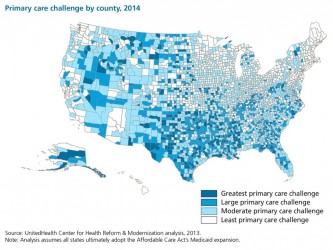
Primary care is the foundation of the U.S. health care system. Effective primary care initiates care coordination and prioritizes care management; ensures that interventions continue across delivery settings; improves quality, outcomes, and patient experiences; and contains costs by reducing downstream utilization of more expensive services delivered by specialists or in hospitals.
Despite incremental short-term gains, access to primary care remains a challenge both for the uninsured and for many individuals with health coverage. By 2025, the estimated shortage of primary care physicians will grow to be between 15,000 and 36,000.
There are multiple, complementary pathways to successfully expand primary care capacity and improve service delivery. When implemented successfully, their common threads include focusing on the patient; the quality of service delivery; and paying for value. In the near term, we can increase access to high-quality primary care services by focusing on proven, scalable approaches that include leveraging nurse practitioners as well as urgent care centers and retail health clinics.

